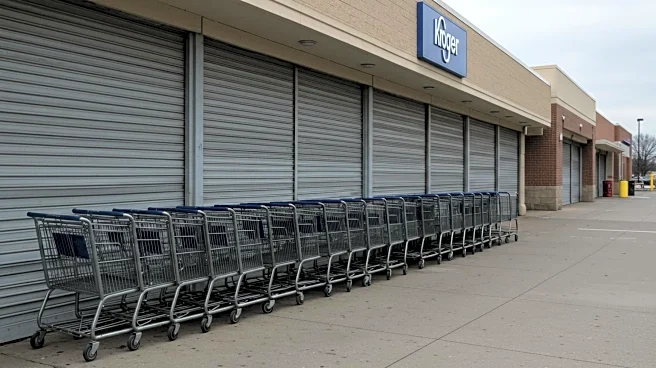What is the story about?
What's Happening?
Kroger has announced plans to close several of its stores across the United States, affecting locations in Georgia, Illinois, Virginia, and West Virginia. This decision is part of a broader strategy to shutter 60 stores nationwide over the next 18 months, as revealed in the company's first quarter 2025 sales report. Interim CEO Ron Sargent noted that the closures are due to unprofitability and are spread throughout the country. Kroger, which operated 2,731 stores at the start of the fiscal year, will see about 2% of its locations affected by these closures. The company plans to invest between $3.6 billion and $3.8 billion this year in capital expenditures, including building new stores and renovating existing ones. Employees at the closing locations will be offered positions at other stores.
Why It's Important?
The closure of Kroger stores in these states could have significant implications for local economies and communities. As one of the largest grocery chains in the U.S., Kroger's presence is vital for providing jobs and access to food. The closures may lead to job losses and reduced access to grocery options for residents in affected areas. Additionally, the company's investment in new and renovated stores suggests a shift in focus towards more profitable locations, which could impact the competitive landscape in the grocery industry. The decision reflects broader trends in retail where companies are increasingly optimizing their store portfolios to enhance profitability.
What's Next?
Kroger's store closures are expected to continue into September and October, with additional locations in Georgia, Tennessee, and Virginia slated for closure. The company will likely face scrutiny from local communities and labor unions, particularly the United Food & Commercial Workers, which has been actively monitoring the situation. Kroger's strategy to offer roles in other stores to affected employees may mitigate some of the negative impacts, but the long-term effects on local economies and the grocery market remain to be seen.
AI Generated Content
Do you find this article useful?











